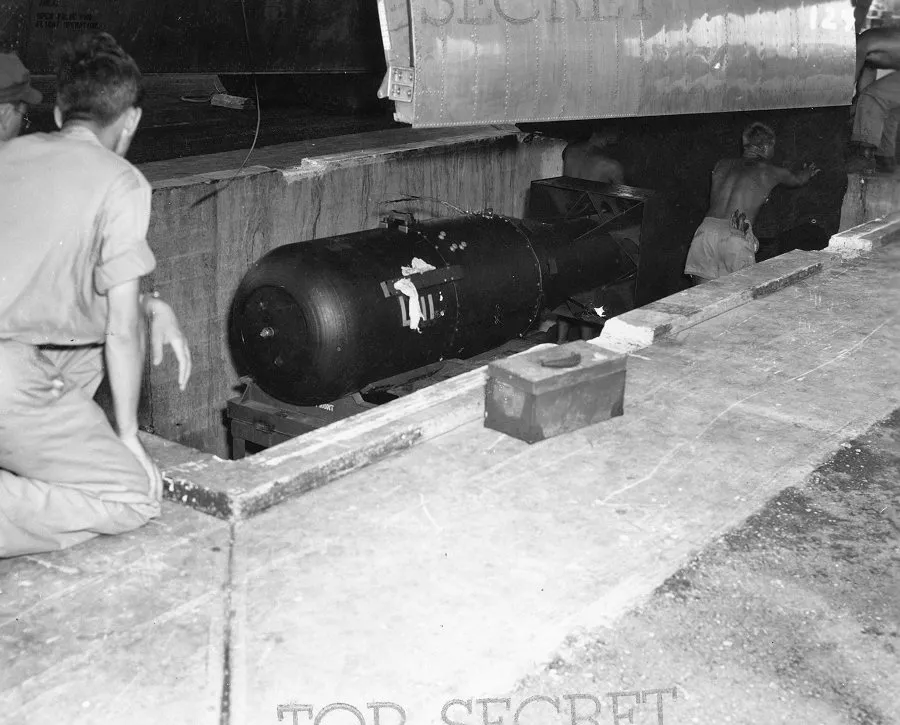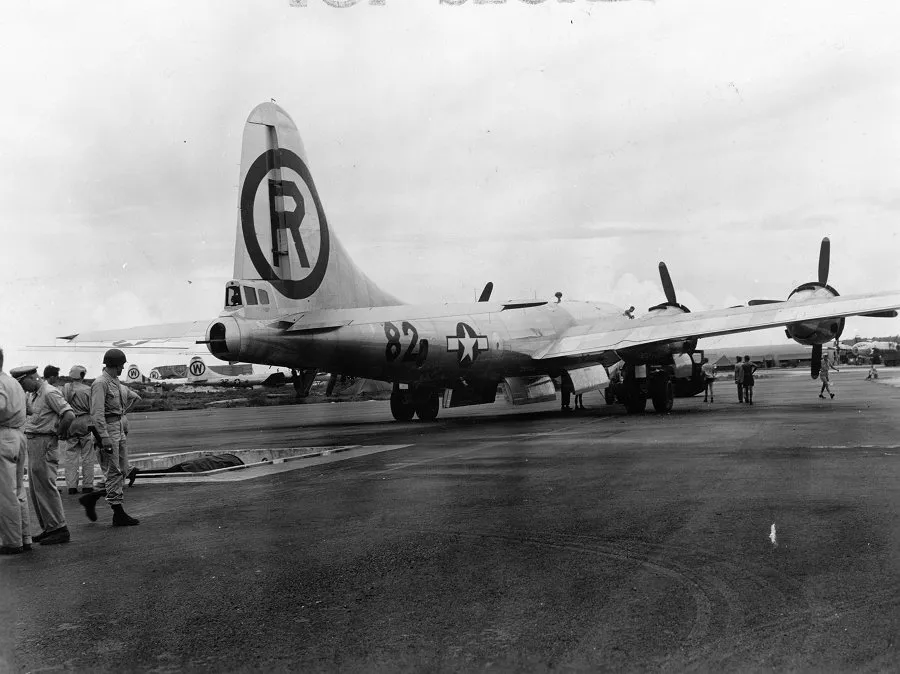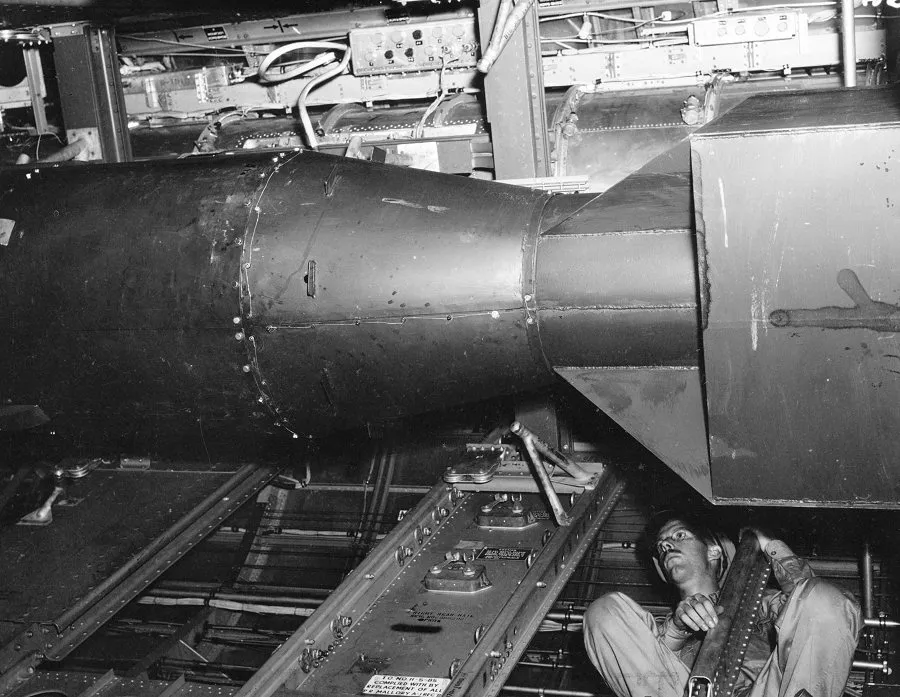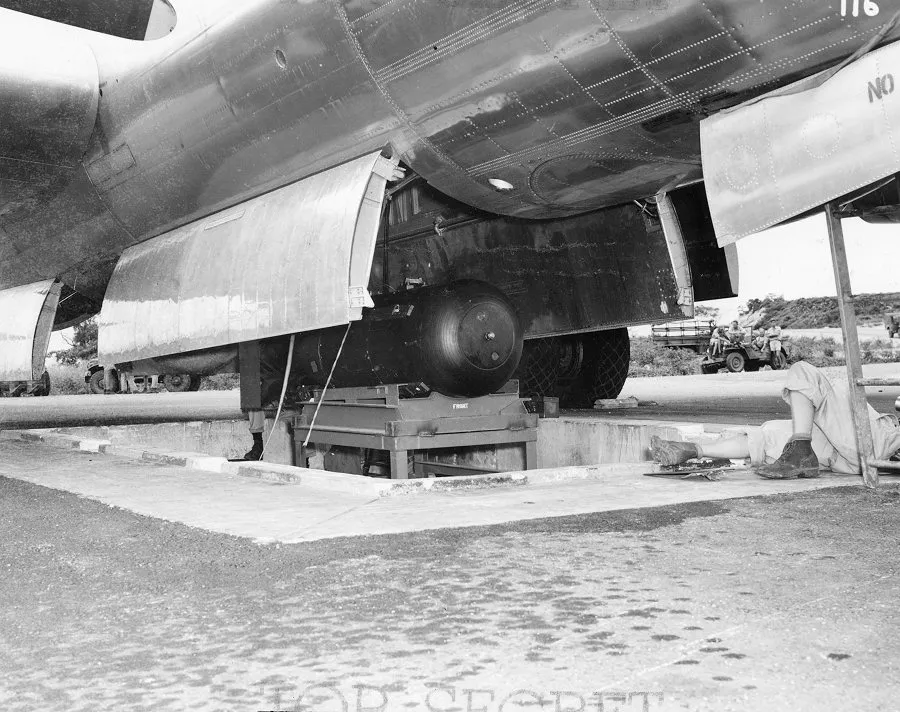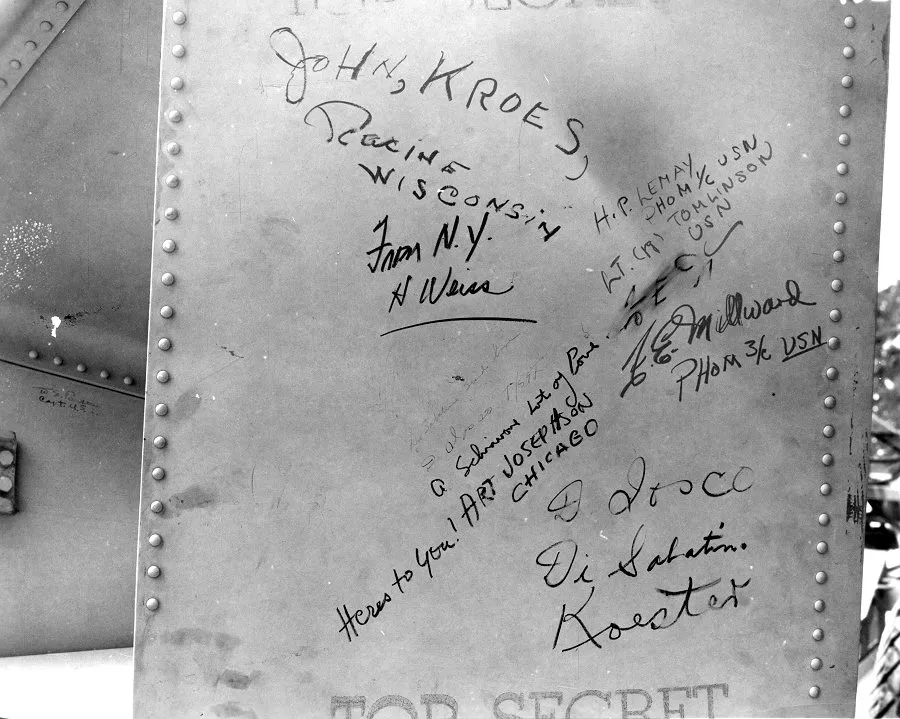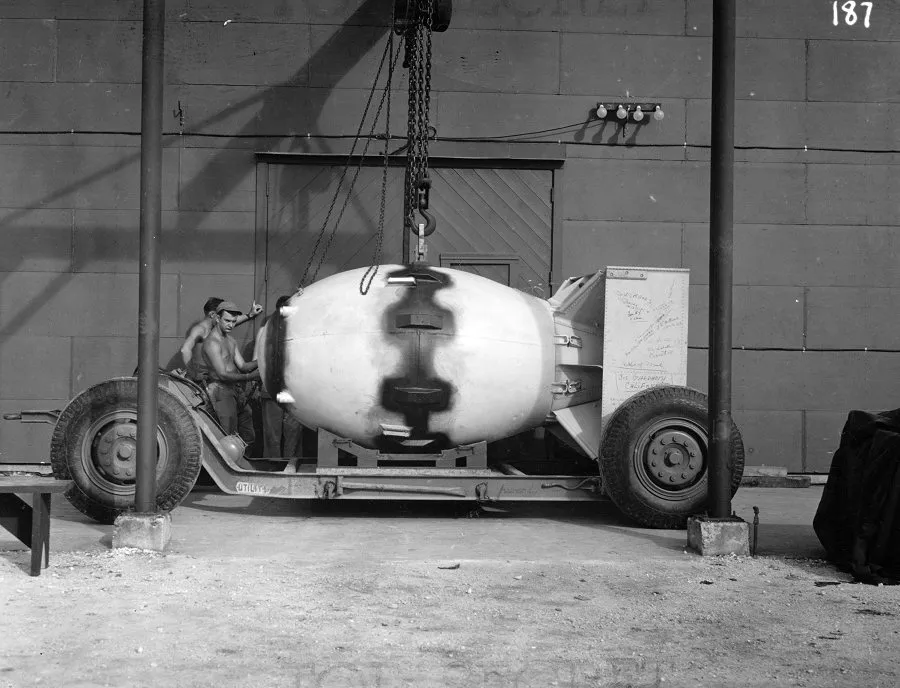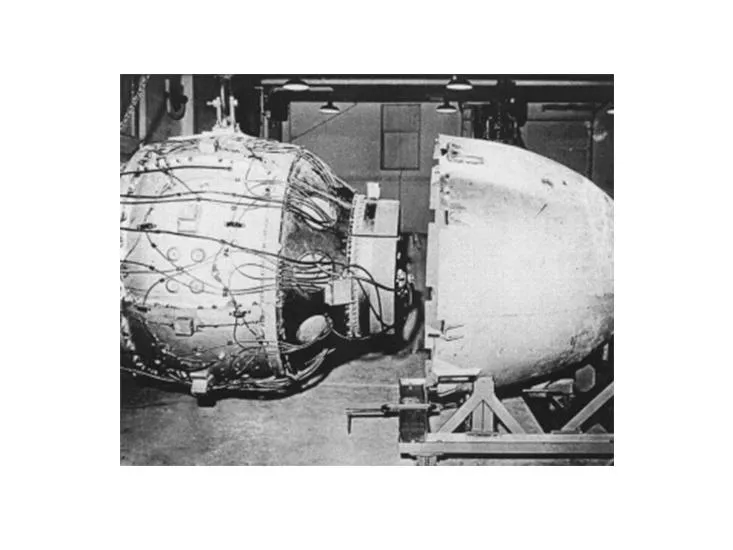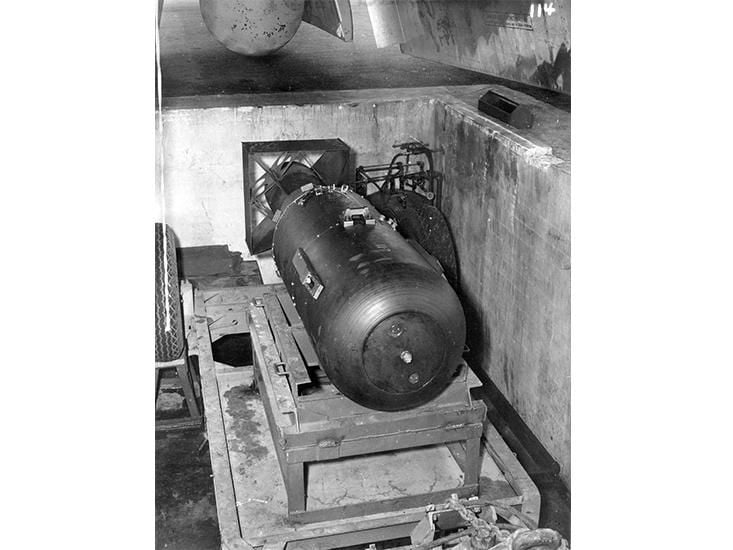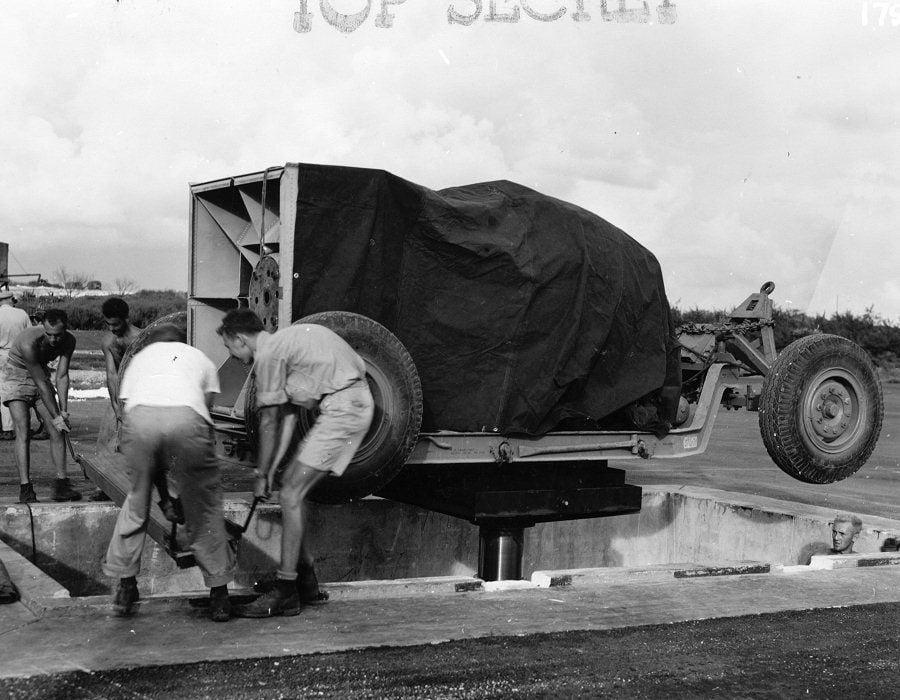How Physics Drove the Design of the Atomic Bombs Dropped on Japan
The gun-like design of the Little Boy bomb was effectively the last of its kind
/https://tf-cmsv2-smithsonianmag-media.s3.amazonaws.com/filer/39/43/39436270-106d-4140-9beb-3e6c80f7c7b4/77-bt-183_putty_applied_to_forward_polar_plate.jpg)
For many scientists involved in the Manhattan Project, the race to build an atomic bomb was a grim battle between life and death. There was no denying the technology's destructive force or its inevitable civilian toll. After the bombings of Hiroshima and Nagasaki, which took place 70 years ago this week, scientific director J. Robert Oppenheimer famously recalled his feelings upon hearing the news, quoting from a Hindu text: "Now I am become Death, the destroyer of worlds."
But in the grip of World War II, with German scientists furtively working on the same technology, Oppenheimer and other physicists in the U.S. were keenly focused on the task of creating the world's first nuclear weapon. And within the secret confines of Los Alamos National Laboratory, an internal battle was raging between two groups with opposing ideas for how to deliver the deadly payload.
Ultimately, two types of bomb using different radioactive materials fell on Japan just days apart, codenamed Little Boy and Fat Man. But if scientists had succeeded in their first attempts, both bombs could have been named Thin Man.
The nucleus of an atom is a more variable place than you might imagine. At its heart, an atom contains a mix of particles called protons and neutrons, which combine to give the atom its mass and its unique elemental personality. While all atoms of a given chemical element have the same number of protons, the neutron count can vary, yielding isotopes of different masses. But like an overcrowded raft, some isotopes teeter on the edge of stability and are prone to spontaneously tossing out excess energy and particles in the form of radiation. Over time, radioactive isotopes naturally decay into more stable configurations and even into new elements in a fairly predictable chain of events.
Harnessing the atom to create an explosion didn't seem realistic until 1939, when scientists in Berlin managed to deliberately split a uranium atom into lighter elements. Induced in the right way, this process of nuclear fission can release enormous amounts of energy—according to initial reports by The New York Times, the bomb dropped on Hiroshima exploded with the force of 20,000 tons of TNT, although that estimate has since been downgraded to 15,000 tons.
In a 1939 letter to U.S. President Franklin Roosevelt, Albert Einstein warned of the fission experiment and Nazi efforts to build a weapon. Soon after, scientists showed just how much uranium would be needed to achieve critical mass and detonate a fission bomb, and they proved that they could also use plutonium for the task. By 1941, the Manhattan Project had joined the race to develop a working atomic bomb.
Oppenheimer at first placed his faith in a design codenamed Thin Man, a long, skinny gun-type bomb. It would fire a plug of radioactive material at a target made of the same stuff, so that the combined forces of compression and increased mass triggered the chain reaction that would lead to a fission explosion. As a hedge, another team was investigating an implosion bomb, which would compress a subcritical mass of material in a core surrounded by explosives. When the charges went off, the ball of material would get squeezed from the size of a grapefruit to that of a tennis ball, reaching critical mass and detonating the bomb.
The implosion design was elegant but the physics were less certain, which is why the gun model took priority. After about four months, though, project scientists realized that the Thin Man was not going to work with their desired fuel source, the radioactive isotope plutonium-139. The Hanford Site in southeastern Washington State was built in 1943 with the express purpose of pumping out weapons-grade plutonium, and it turned out that material from its reactors had a fatal flaw.
"The plutonium Thin Man design had to be abandoned because of high risk of pre-detonation," says Barton Hacker, a military technology historian at the Smithsonian's National Museum of American History. That's not as scary as it sounds—it simply means that the plug and the target would lose their destructive power before the bomb could actually go off. "Available plutonium emitted too many neutrons, setting off a nuclear reaction before critical mass could be attained, resulting in what the physicists called a fizzle."
The neutron emission from uranium was low enough to let a gun-type reach critical mass, but the supply was severely limited. "Plutonium could be produced more quickly than weapons-grade uranium," says Hacker. "The gun design was sure to work, but there wasn't enough uranium for more than one in 1945."
The Little Boy bomb that fell on Hiroshima on August 6, 1945, was the offspring of the Thin Man, a shorter gun-type bomb that carried a uranium payload. Meanwhile, the bomb dropped on Nagasaki on August 9 was an implosion device, the plutonium-powered Fat Man. Its design was about ten times more efficient and generated a greater explosive force, equal to about 21,000 tons of TNT, according to modern estimates. Although the Little Boy bomb was less efficient and less powerful, it destroyed more of the area around Hiroshima because the hilly terrain around Nagasaki restricted Fat Man's blast radius. Still, in the wake of the bombings, implosion became the primary design for nuclear weaponry into the Cold War era.
"To the best of my knowledge, the only gun-type design ever detonated after Hiroshima was one of a nuclear artillery shell tested in Nevada in 1953," says Hacker. "All the rest were implosion designs. Gun-type designs were reliable but inefficient, using more nuclear material for the same results as implosion devices. They remained in the stockpile as artillery shells, but no others were detonated."
